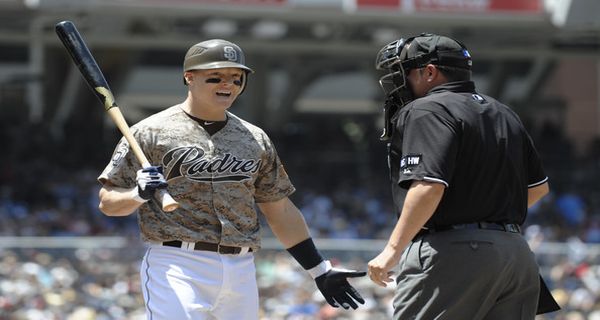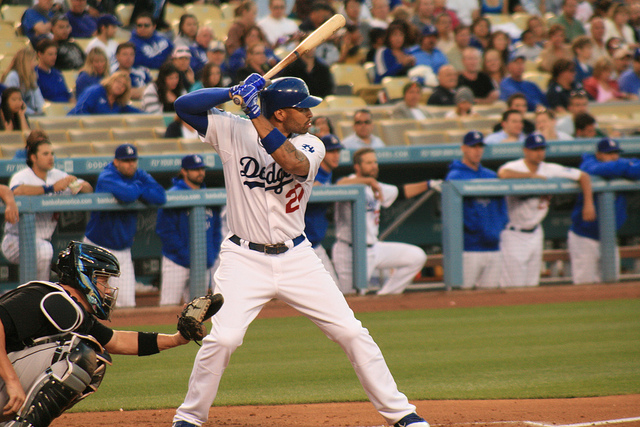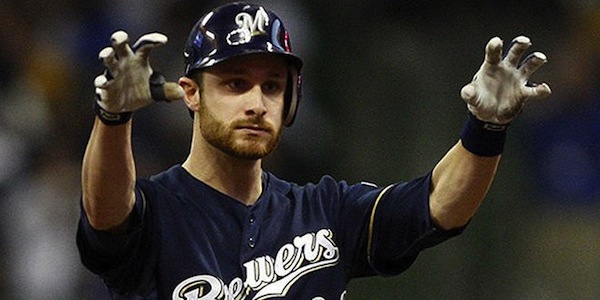Rotters and Sleepers: Catchers

“On a long enough timeline, the survival rate drops to zero.” — Tyler Durden
For those that have either read Fight Club or watched the movie, you are familiar with that quote. Of course, we are not talking about real death here, but we are talking about the death of a career. Everyone is going to be told one day that they can no longer play the game. Usually, the results on the field tell us louder than any coach or general manager. For me, it happened at 11 years old, so I am not one to judge. What we are talking about is the number one question any fantasy expert gets in any fantasy sport: can you identify sleepers for me?
In one sense, that’s the worst question we can get. There are usually a half dozen candidates at each position, so asking such an openended question is paralyzing. Yet, such a question is the thing that separates true experts from guys and gals that just like the flap their gums (or bang on their keyboard). How do we tell the difference between someone that is in a deep sleep and someone that is a rotting corpse? In real life, the scent itself would be the first clue, but fantasy statistics don’t give off an odor. However, they may figuratively and that is what we are looking for. We are looking for trends and so we must go beyond one or two seasons to find the tell tale signs of sleep or rot.
For those new to total run index (TRI), I invite to go back and read the introductory article on the subject. For those that want to skip all of that, let’s just say that TRI is a compilation statistic that calculates the total number of runs a player is above or below the league average. The statistic is park neutral, so you could make adjustments on your own to adapt for your purposes. We will look at prominent catchers that turned in down seasons last year. Will they bounce back (sleepers) or will they continue to trend downward (rotters)?
[am4show have=’p4;p7;p3;’ guest_error=’Front Office’ user_error=’Front Office’ ]
Brian McCann– Atlanta Braves
- 2012: -9.3
- 2011: +9.9
- 2010: +13.9
- 2009: +13.4
- 2008: +22.2
It doesn’t take a genius to figure out what is going on here. That is the beauty of total run index. That being said, while we should expect continued decay, the collapse that happened in 2012 was not predictable. Of course, that’s part of the fun of baseball. Players rarely ever follow a prescribed formula of ascent of descent. We should expect McCann to return to positive territory this season, but we can easily replace 2012 with a season of normal decay and then base 2013 on that season.
A normal amount of decay would have had McCann somewhere in the seven run category in 2012. Therefore, we could expect him to rebound to around the five run range. For most positions, that would still not be much worth the effort, but catcher is one position where we struggle to get guys above the league average. That means that McCann would qualify as a sleeper in most leagues. In a mixed league, he should probably be drafted among the top ten catchers in the league. Grade: Sleeper
Alex Avila– Detroit Tigers
- 2012: -1.1
- 2011: +29.7
- 2010: -10.1
- 2009: +4.2
Which one of these does not belong? Analyzing TRI data is a lot like answering those pesky SAT questions about which object does not belong. So, let’s play along. Tyler Durden was a recall coordinator. He applied the formula. Unfortunately, when there isn’t enough data, you can’t apply the formula. Hundreds of fantasy players bought into Avila’s ascension and I was one of them. Given the data at the time (only the first three seasons) we thought Avila was coming of age. As it turned out, he was simply having a career season. It happens.
Avila is not so much a rotter, but someone that will hover around the league average for most of his career. As we mentioned before, the league average is not such a bad place to be and that has a place in some fantasy leagues. In an AL only league you could do a whole heck of a lot worse. In mixed leagues, Avila would be a solid backup catcher you could stash on your bench in case disaster happens with the regular. Who knows, maybe lightening will strike twice. Grade: Rotter
Mike Napoli– Boston Red Sox
- 2012: +6.9
- 2011: +37.5
- 2010: +9.0
- 2009: +14.6
- 2008: +17.6
Here, we see Exhibit A as to why it is beneficial to go back five years as opposed to three seasons (or two). The Boston Red Sox were prepared to go three seasons with someone that appears to be on a collision course with the league average. Fortunately for them, a hip problem cropped up in the physical and helped them get out of that bad deal and shorten it to one season. For one year, Napoli is decent gamble. He will be playing a less demanding defensive positon (first base) and therefore is destined to get more plate appearances.
For you, that means he is still eligible at catcher and therefore is still relevant. He will likely finish somewhere in the Brian McCann neighborhood in terms of value, but could produce more counting (HR, Runs, RBI) numbers for your team. 2011 saw him produce monster numbers and the fact that he did not sign a long-term deal after the season is a testament to the fact that Jon Daniels and his staff can read actuary tables like the one above. Grade: Rotter
Russell Martin– Pittsburgh Pirates
- 2012: -1.1
- 2011: -1.9
- 2010: -2.7
- 2009: -1.8
- 2008: +11.8
When is a sleeper not a sleeper? Russell Martin spent long chunks of 2012 flirting with the Mendoza Line. Therefore, the trogladites among us naturally assumed he was having a down season. Well, we wouldn’t exactly call it a season for the ages, but for Martin it was the best season he has had of late. The Pirates had visions of A.J. Burnett dancing in their head when they decided to sign Martin. He will be freed of the pressure cooker that is New York and will suddenly find the fountain of youth. After all, it worked for Burnett.
The problem is that there was reason to believe Burnett would return to that form because he had produced it outside of New York. The malaise that has caught a hold of Martin predates his move to the Yankees. It has gone on for so long it makes you think the period before was the fluke. Martin’s 2007 and 2008 seasons were well above the league average, but every other season (including his 2006 rookie season) are at league average or below. So, we really can’t classify Martin as a sleeper because he wasn’t asleep. He just looked drousy because of a low batting average. Grade: Rotter
Nick Hundley– San Diego Padres
- 2012: -19.9
- 2011: +13.3
- 2010: -3.2
- 2009: -1.7
- 2008: -6.6
Hundley is another example of how a player’s true character is revealed the longer a timeline we are given. Prior to 2012, you would have thought that Hundley was on the rise. Sure, 2011 looked a little out of character, but he was a younger player who appeared to be on the upswing in general. In 2012, the bottom dropped out and he turned in the worst offensive season of any catcher with more than 200 plate appearances. He seemed destined to ride off into the fantasy sunset before he had really made his presence known.
Hundley is an example of how every story has multiple angles depending on your point of view. The Yasmani Grandal suspension seemed like a cruel joke to Grandal and Padres fans, but for Hundley it is best news in the world. It gives him a 50 game headstart on proving 2012 was a fluke. In many ways it was. A .196 batting average on balls in play was a full 100 points lower than his career average. Add those 100 points back alone and you are looking at .257 average in lieu of a .157 mark. Hundley is the easiest sleeper to identify, but fans have to be realistic on their expectations. Normally, he is a slightly below average performer, so expecting 2011 to happen again is a bit unrealistic. However, he could prove to be a decent backup. Grade: Sleeper
Chris Iannetta– Los Angeles Angels
- 2012: +0.8
- 2011: +4.3
- 2010: -5.8
- 2009: +0.3
- 2008: +13.1
We save the most confusing for last because as the numbers would suggest, Iannetta doesn’t exactly count as a sleeper. Iannetta is a nuanced character that is difficult to pinpoint in two paragraphs or less. Through 2011, his fantasy value could in part be tied to his home ballpark. He rated as a slightly above average according to TRI, but TRI is a park neutral number. On the other hand, even given the park advantages, Iannetta was hardly a fantasy star because he had exactly two seasons with 100 or more games played since he came up in 2006.
Sea level was no more inviting in terms of health. All of the indications in 2012 was that Iannetta continued to be an above average performer (+0.8 TRI, 108 OPS+), but he could not even get on the field half of the time. The Angels have added to their lineup and have removed some of the competitive impediments to his ascension. Now, he just needs to get out of his own way and simply play. If past is prologue then it only makes sense that he will continue to struggle to stay on the field. Grade: Rotter
[/am4show]






1 Comment
I like readinhg a post that can make people think.
Also, thanks for alloowing me to comment!